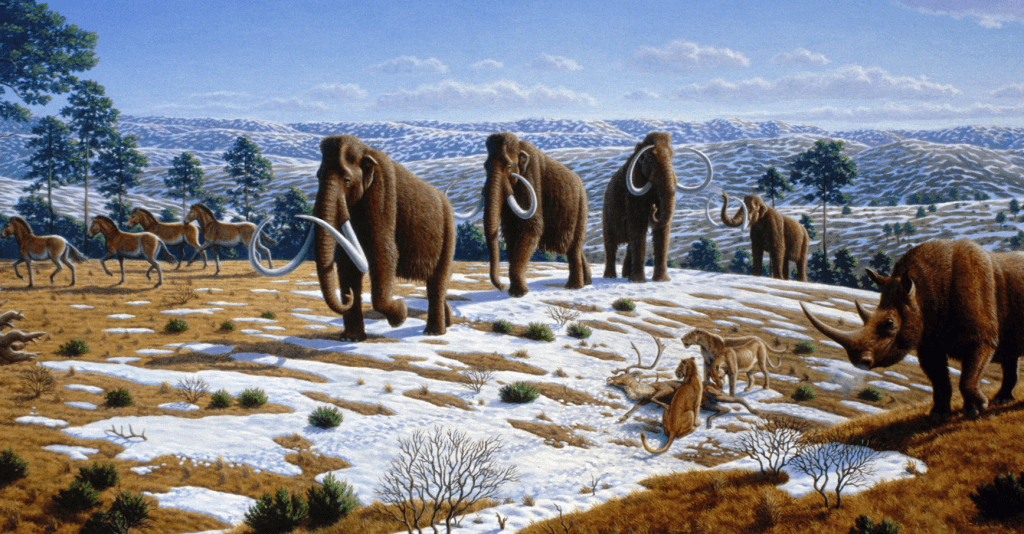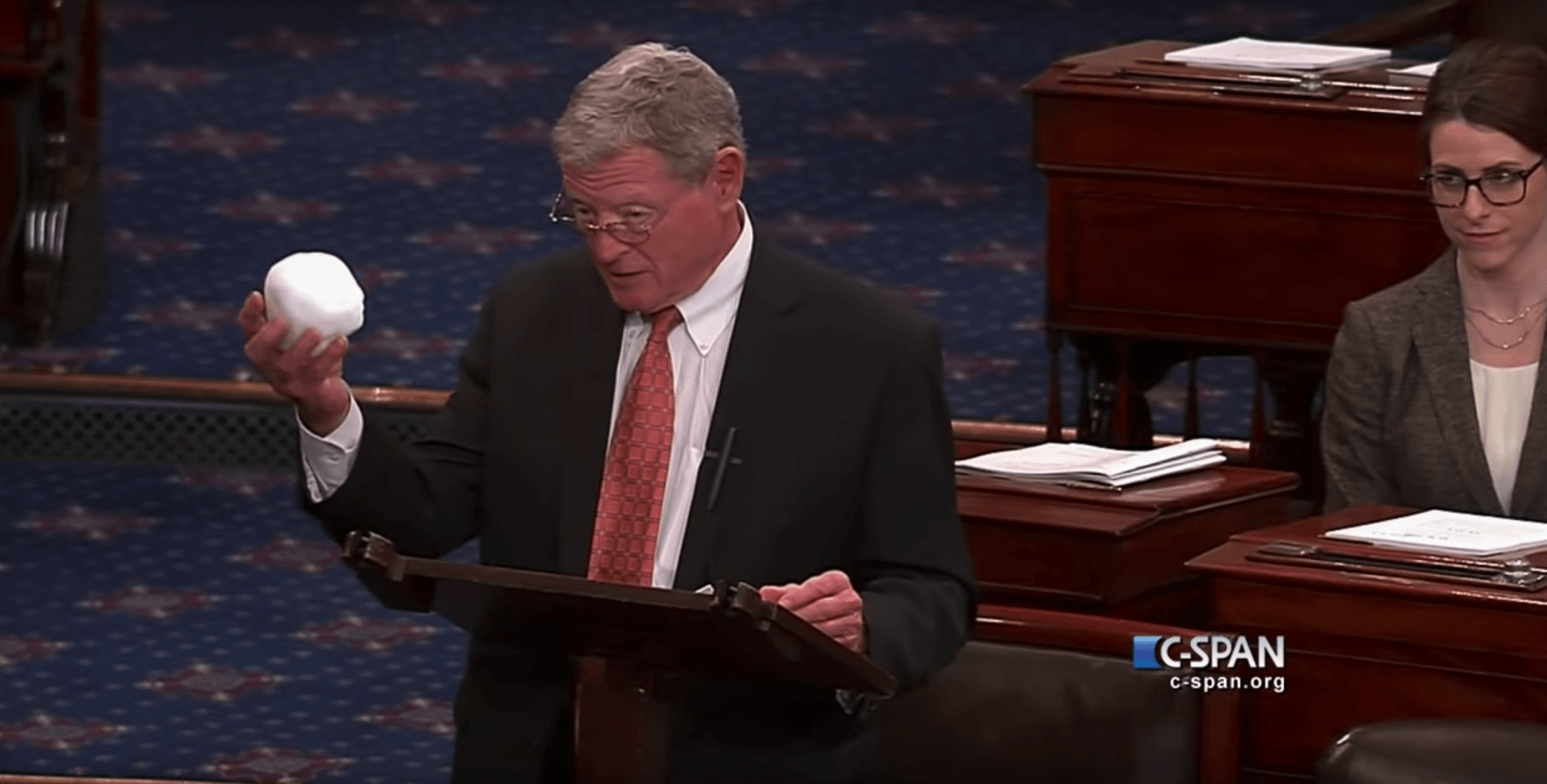Could mammoths or carbon dioxide eating microbes solve climate change before the US government does?
By Matt Field | April 26, 2019
 Woolly mammoths once were plentiful on the tundra. Illustration: Mauricio Antón via Wikimedia Commons. CC BY 2.5. Cropped.
Woolly mammoths once were plentiful on the tundra. Illustration: Mauricio Antón via Wikimedia Commons. CC BY 2.5. Cropped.
The idea that the US government will somehow enact legislation bold enough to meet the challenge of climate change seems, at least at the moment, almost a nonstarter. In contrast, even some fairly fantastical technological solutions seem comparatively realistic: Unlike the Green New Deal in the halls of Congress, research and development on climate change-related products is moving forward. From pseudo-woolly mammoths to carbon dioxide eating microbes, biologists have some pretty far-out ideas for tackling climate change, some that might not even be all that far-fetched.
For instance, using untreated carbon dioxide from a cement plant, Silicon Valley-based NovoNutrients grows microbes that will become Novomeal, a protein-rich food for aquaculture. Fish farming is already a $232 billion industry, one that’s growing as consumers demand more tuna, salmon, and other fish despite dwindling wild fisheries. As the carbon emissions of a single cement plant could produce enough Novomeal to satisfy about a third of global demand for fishmeal, according to NovoNutrients CEO David Tze, at the moment, the company’s product is not a silver bullet against climate change. (There are nearly 100 cement plants in the United States alone.)
But Jeff Bercovici, who talked to Tze and wrote about NovoNutrients and a handful of other so-called synthetic biology, or synbio, companies for Inc., sees a new form of energy production and manufacturing taking shape: “What his company is constructing—along with others working similar angles in San Francisco and Berkeley and Skokie, Illinois—is nothing less than the infrastructure for an entirely new economy, one premised on producing food, energy, and material goods by sequestering harmful chemicals rather than by emitting them.”
So entrepreneurs already know how to breed commercially useful microbes that feed on industrial carbon dioxide. That’s right. Raising billions of dollars’ worth of fish food essentially from a cement factory smokestack is a more straightforward proposition than convincing someone like Republican Sen. James Inhofe—who once brought a snowball to work to prove that it still gets cold—that a rapidly warming climate demands his urgent attention.

Then there’s the idea of bringing back the woolly mammoth—which died out about 4,000 years ago—to once again grace the tundra and help maintain its permafrost. Permafrost is the frozen ground in the tundra that contains a staggering amount of greenhouse gas. When it melts, microbes feed on organic matter in the soil and release carbon dioxide and methane. By poking holes in the snow that coats the permafrost, the mammoth, like some currently non-extinct species, could expose the frozen ground to cool air, thereby helping it remain frozen. Some think the mammoth could be better at this so-called “ecosystem service” than other animals like reindeer.
Famed Harvard geneticist George Church believes he’s still about a decade away from reviving the mammoth (or more accurately a mammoth-like Asian elephant). On the other hand, just how long would it take to convince President Donald Trump, who routinely mocks the idea of climate change, to get onboard with something like the Green New Deal?
Yep, when it comes to fighting climate change, mammoths might be a surer thing than US governmental action.
Publication Name: Inc.
To read what we're reading, click here
Together, we make the world safer.
The Bulletin elevates expert voices above the noise. But as an independent nonprofit organization, our operations depend on the support of readers like you. Help us continue to deliver quality journalism that holds leaders accountable. Your support of our work at any level is important. In return, we promise our coverage will be understandable, influential, vigilant, solution-oriented, and fair-minded. Together we can make a difference.
Keywords: David Tze, George Church, James Inhofe, NovoNutrients, Novomeal, aquaculture, fishmeal, permafrost, woolly mammoths
Topics: Climate Change, What We’re Reading















